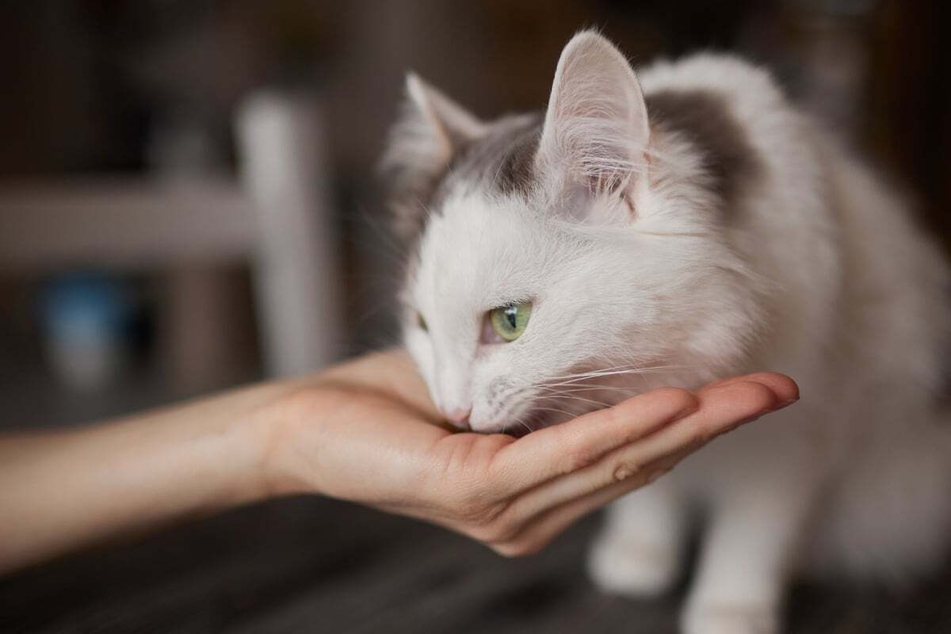How to train a cat to sit
Cats are famously aloof and independent, and even those most fond of our feline friends sometimes wish they'd be a little bit more open to following commands. Is that even possible, though, and could you ever teach your cat to sit?

Ever wondered if you could teach your cat to do tricks or even – hear us out – do what you want it to do?
Crazy as it may seem given their reputation, cats are perfectly capable to do all sorts of things usually associated exclusively with dogs.
After all, they certainly don't lack the smarts for it, and with a little bit of training and persistence, they might even allow you to think you're in charge for a bit!
So let our cat guide start you off with something simple. Can you train your cat to sit?
Can you train a cat to sit?
We're not going to lie – it's a difficult thing to do, but yes, you can train your cat to sit on command. It might seem extraordinarily unlikely – and for many, it might end up being so - but it's actually possible. Cats are just as susceptible to the proverbial carrot, so all it takes is giving them the motivation they need to do what you want them to do.
Should I hire a professional cat trainer? Why? Why would want to do that? It's a cat! Look, there are professional cat trainers out there, so have at it if you must, but remember that it's in your feline friend's nature to stay aloof, and unless its behavior is destructive or harmful, that's probably for the best.

How to teach a cat to sit
Teaching a cat to sit is actually a pretty straightforward process, and you can even use clicker training to help. Still, the most important thing for you to understand is that this is going to take a good long time, and there's not much you can really do about it. Of course, every cat is different, but don't raise your expectations too high.
Here's how to teach your cat to sit on command
Step 1: Call the cat over to you and make it comfortable and happy. Teach it the name you have assigned, so that when you call it, it will come.
Step 2: Hold out your index finger and raise your hand. As soon as the cat looks at the finger, say "Sit" in an authoritative and commanding manner.
Step 3: Naturally, if your cat just decides to sit and looks up at your finger, it may seem like you've already achieved your goal.
Step 4: If it seems like the command worked, reward your cat with a tasty but healthy treat.
Step 5: If your cat did not sit on command, place a treat on the outstretched finger, making it clear what it is and where, but keeping it just out of reach.
Step 6: As your cat stretches its head upwards towards the treat, trying to reach it with its mouth and tongue, slowly raise your hand until your kitty has to be in a sitting position to eat the snack.
Step 7: Once your cat has properly sat down, continue to say the word "Sit" and feed your kitty the treat.
Step 8: Repeat this process regularly, every day, for weeks or months, until your cat will naturally sit when you ask it to.
It's going to take a long time to train your cat to sit properly. Have patience and, eventually, there is a possibility that it will work.
Tips for making cat training easier

One of the most important things to do when trying to train your cat to do anything is to make sure that the environment it's in is tightly controlled. Cats are very easily distracted or startled, so it needs to be quiet, calm, and familiar. You don't want any toys around, nor any other food source other than the snacks you will provide.
Here's how to make the environment perfect for cat training:
- Keep it quiet: The sit command should always be practiced in a quiet environment, to avoid distractions.
- Provide the right reward: Make sure you choose the right treats and don't have any other tasty sources of food nearby, so your cat doesn't just give up and wander off.
- Allow for repetition: Make sure that you train your cat each and every day, very consistently. As a result, it's important to choose an environment that is easily accessible every single day.
- Keep it simple and read body language: It is important not to overwhelm or confuse your cat. Watch its body language and recognize that if it starts grooming itself or wandering off, it may be confused or overwhelmed. If this happens, take a break.
There's no forcing this process. Ultimately, cats respond and behave best when they think it's their idea. Continue training, take your time, and be patient.
Caution: Amid all your training efforts, don't forget to count the treats you have given your cat and count them towards your kitty's daily food allowance. You don't want it to turn into a bowling ball.

Can cats learn other commands?
Yes, there are a variety of commands that you can teach your cat using similar tactics to those described here. Keep in mind, though, that while you are perfectly capable of doing this, your kitty is never going to be as eager to please as a dog is in this department.
There are a variety of things that you can train into your cat:
- You can train your cat to walk on a leash.
- You can train your cat to wear a harness.
- You can toilet train your cat.
- Clicker training can be used for all sorts of different tricks and commands.
Follow our detailed guide training your cat for more interesting information.
With a little bit of luck and a lot of patience, you can train your cat to do all sorts of things.
Cover photo: Collage: 123RF/Koldunova & 123RF/Evdoha




